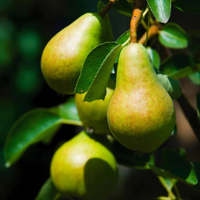When to prune pear trees – expert advice for timing your winter and summer pruning
Knowing when to prune is as important as knowing how – pruning at the wrong time can damage your tree
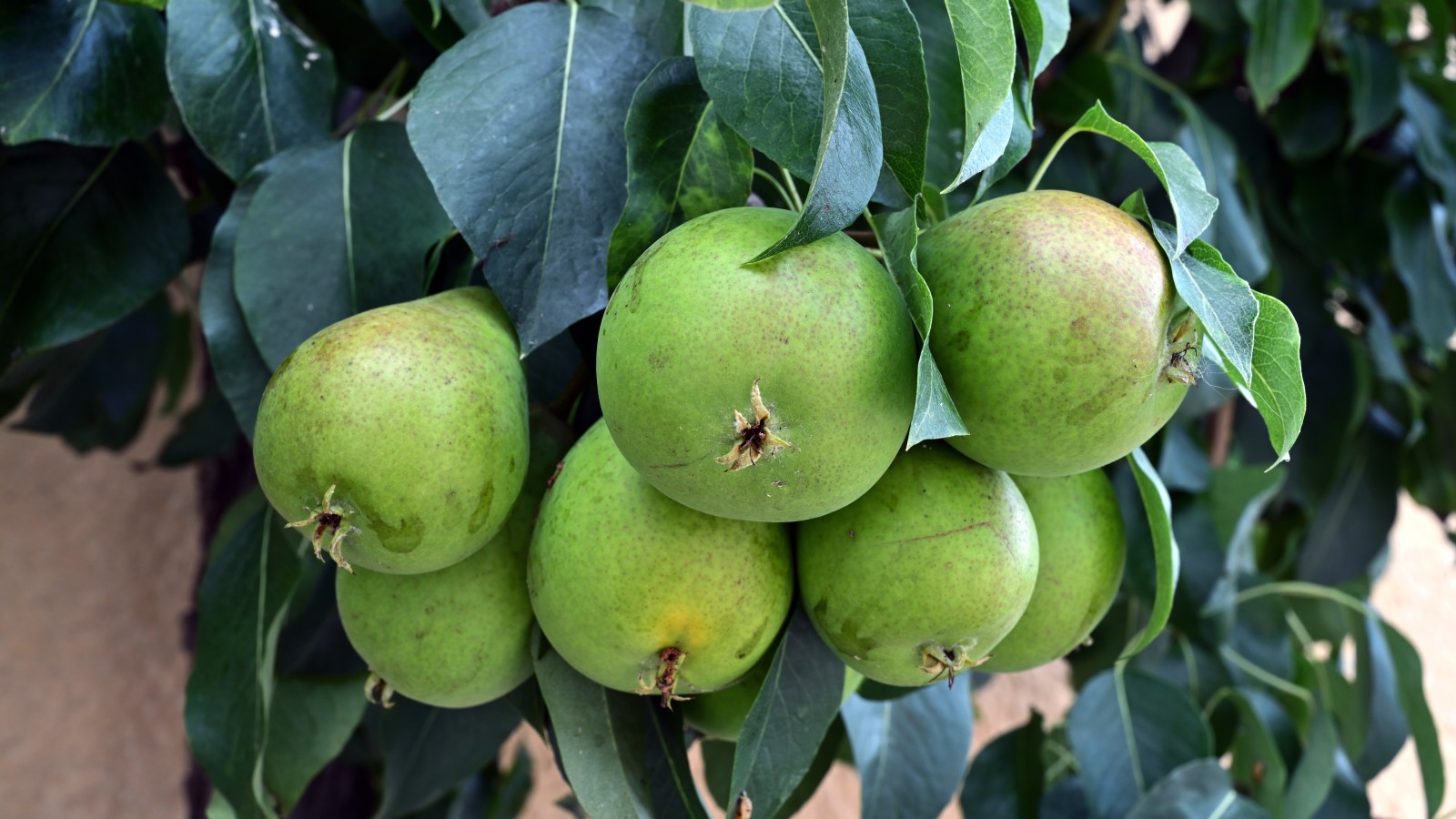

Pear trees can give you a fantastic and reliable crop of homegrown fruits year-after-year. There are lots of delicious varieties to choose from and pears can be grown as free-standing trees, trained against a wall or fence, or even in pots.
Part of knowing how to prune pear trees is being aware of the correct times for when to prune pear trees. Pruning at the right time of year is crucial to having healthy and productive pear trees.
I maintained and pruned both free-standing and espalier pear trees over my years as a kitchen gardener to keep them productive. Winter pruning is essential for free-standing trees, with summer pruning more optional, but summer pruning is absolutely vital when it comes to growing trained pear trees.

Pruning helps to keep pear trees productive for bumper crops
Best time to prune a free-standing pear tree
The ideal time to prune a pear tree is the same window as when it comes to pruning apple trees. The primary time to prune fruit trees such as these comes in winter, however there is also scope for some light summer pruning.
The aim of pruning fruit trees in winter is to maintain a shape and promote the growth of vegetative material come spring. Summer pruning restricts growth, encourages sunlight into the tree, and promotes fruiting to help you get a bumper harvest of pears.
Annelise Brilli, horticultural expert for Thompson & Morgan, says that another purpose of winter pruning is to thin out the spurs that pear trees prolifically form, preventing these becoming too congested.
On the ideal time to prune pear trees, Annelise says: ‘Winter pruning should take place when all the leaves have fallen off and the tree is fully dormant, any time between mid-winter and early spring.’
Summer pruning is not essential for free-standing pear trees, however Tim Marshall, head gardener at Raby Castle, recommends that it can be done to ‘keep a formal shape to the tree’. There is a best time to prune, so hold off taking out the garden tools until the time is right as pruning too early in the summer can cause excessive regrowth.
He adds: ‘Summer pruning of pears can take place at the end of July or beginning of August to enable the tree to look aesthetically pleasing but also focus energy and light on the crop.’
When winter pruning fruit trees, it is important to not get too carried away. Never remove more than 20 per cent of the tree’s growth and remember that by pruning hard you will encourage vigorous regrowth.

Tim Marshall, Raby Castle’s head gardener, has had a career which spans nearly three decades and has taken him all over the world. Now working across County Durham’s Raby Estates, Tim is leading the transformation of the walled garden and the grounds to the north of the castle in the project known as The Rising – working with other high profile garden designers as well as his home team.
Bartlett Pear Tree | Available at Fast Growing Trees
A Barlett pear tree produces an abundance of sweet and juicy fruits in late summer. Bartlett pear trees are not self-fertile, so you will need another variety to ensure fruiting.
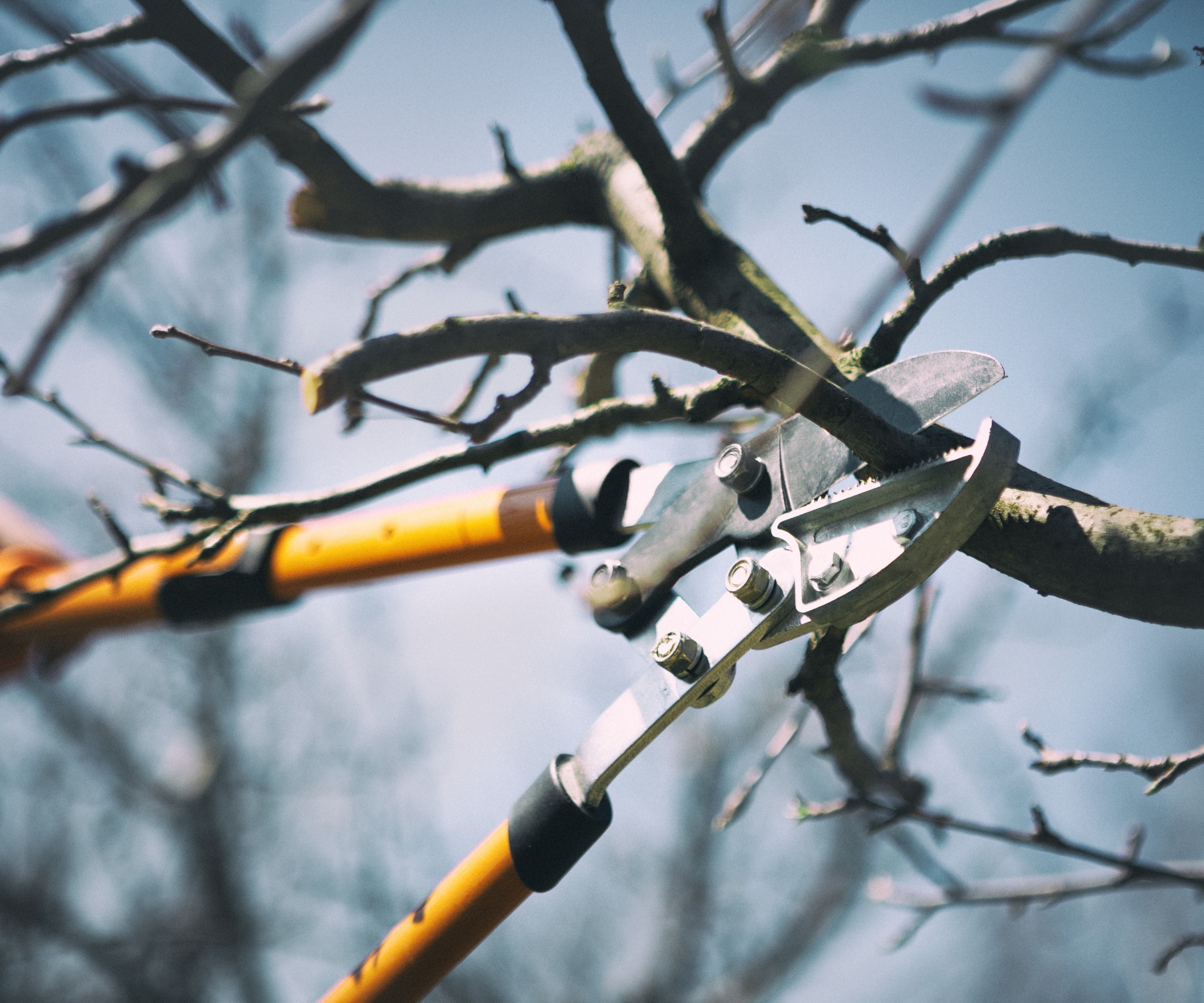
Prune pear trees from mid-winter to early spring
Best time to prune a trained pear tree
Trained fruit trees, such as those grown as espalier trees or cordons, are pruned in the summer. Just as when you are pruning espalier apple trees, trained pears are pruned to maintain their shape and also boost the cropping.
Pruning in winter, at the same time as with free-standing trees, can encourage the formation of fruiting spurs. This is followed by essential annual summer pruning to cut back new shoots, focus the trees' energy into fruit production, and ensure light gets to the fruits to ripen them.
As for when to prune trained pear trees, Annelise Brilli says: ‘Summer pruning takes place as growth slows down and the bottom third of new shoots has started to turn woody. This normally occurs from late July.’
Any fast-growing vertical shoots that do appear after this summer prune – and pears are fast growing fruit trees that do have a tendency to put out these types of shoots – can be further trimmed off in August or September.
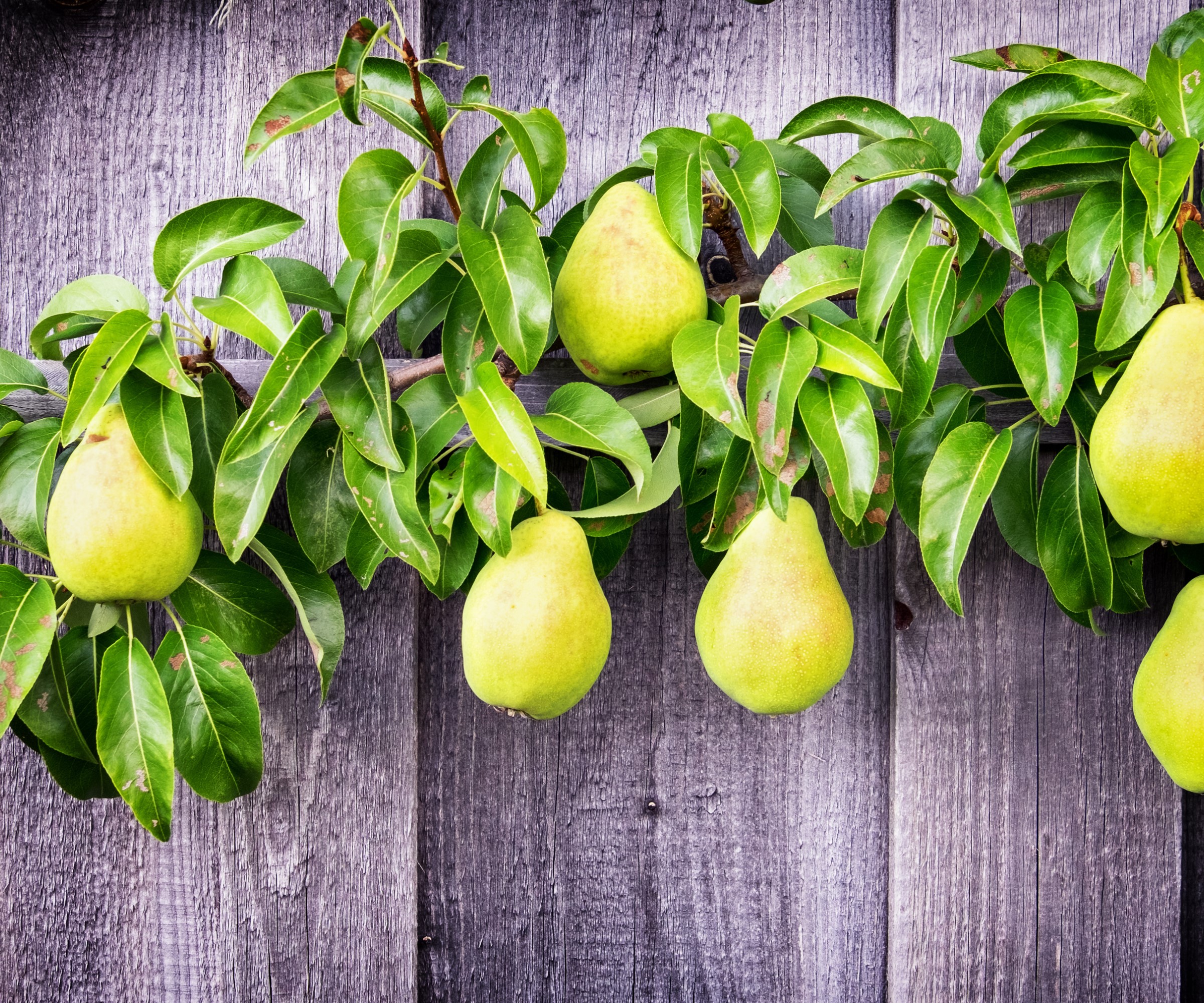
Pears are great fruit trees to espalier
Why is it important to prune pear trees at the right time?
It is vital to prune pear trees, along with any of the best fruit trees, at the right time of year. Pruning at the wrong time is a common pruning mistake and it has the potential to cause problems for the tree.
Larry Stein, professor and extension horticulturist at Texas A&M University, explains how pruning is ‘a stressful process to the tree’. This means that pruning at the wrong time, either before dormancy or too soon in spring, can leave the tree highly stressed and susceptible to colder winter temperatures.
He adds: ‘Pruning stimulates budbreak, so if you prune too early, the trees will bud out early and potentially lose the crop due to cold. Lastly, if you prune before the trees are dormant, you can stimulate new growth which would be susceptible to cold injury.’
There are also potential pitfalls of pruning too soon in summer. This early pruning will divert the tree’s energy into producing a flush of green growth that will not form fruit buds and then be potentially damaged by the winter frosts.

Larry Stein, Ph.D. is a professor and Extension Horticulturist and is the associate department head for Extension programs. Stein received his B.S. in Horticulture from Texas A & M University in 1979 followed by a M.S. in 1981 and Ph.D. in 1985. He was appointed Extension Horticulturist at the Texas A & M Research and Extension in Stephenville in 1985 to work on pecans, fruit crops, and vegetables.
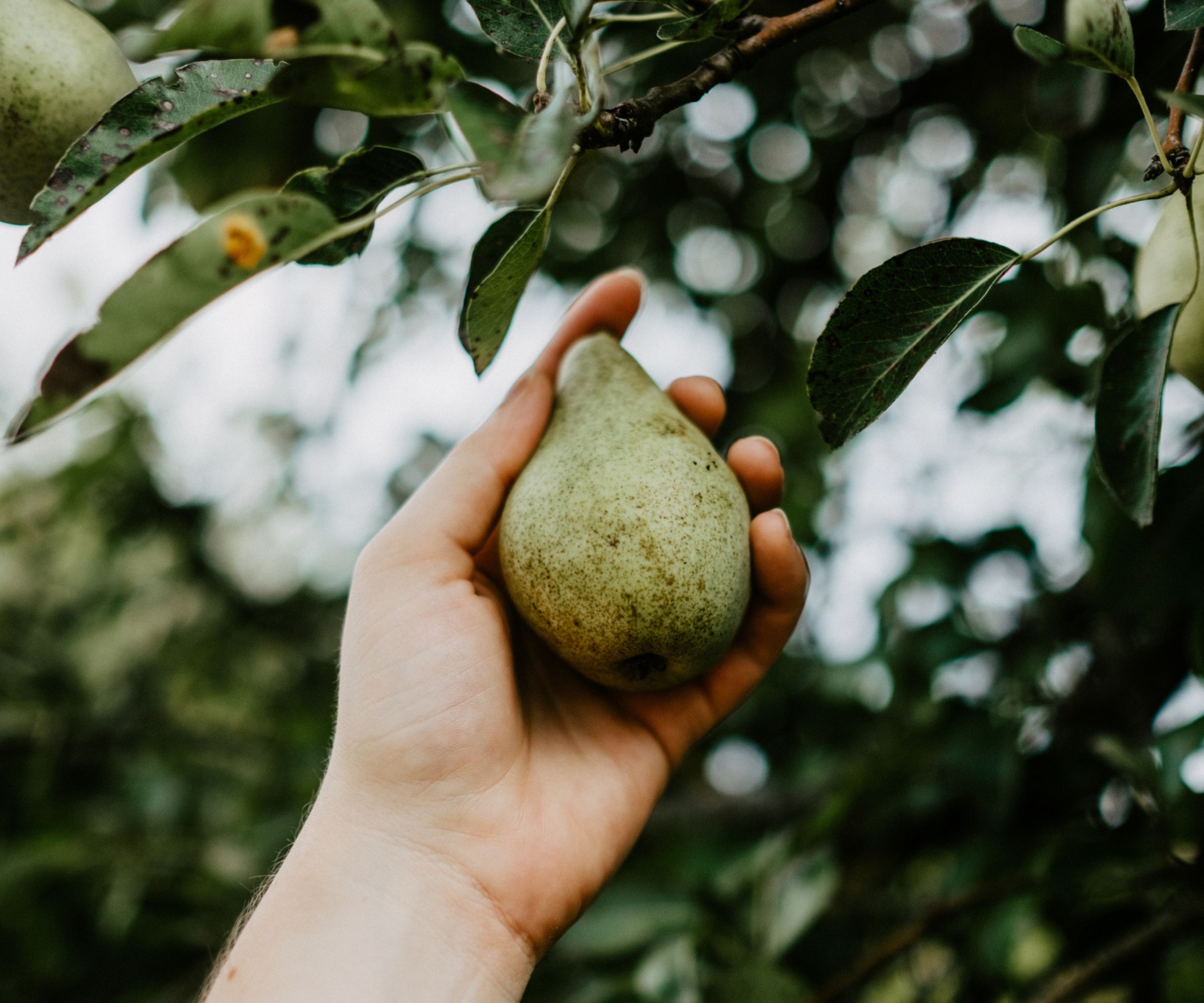
Pruning at the wrong time can impact the harvest
Reasons to prune at other times
There may be a couple of extenuating circumstances in which you may need to get out the garden tools to prune pear trees outside of the usual windows. This may include due to storm damage, safety concerns, pests, or disease affecting the tree. Any of these reasons may require immediate work to protect people or the tree itself.
Annelise Brilli highlights the fatal bacterial disease fireblight as one potential reason, saying: ‘Affected branches develop blackened, scorched leaves, and should be pruned out as quickly as possible.’
If you do need to prune pear trees at any other times than the recommended ones, Tim Marshall reiterates that it ‘should be done with caution and care to minimise potential harm to the tree’. Always use clean and sharp garden tools whenever you prune pear trees to make clean cuts and avoid causing damage. An example of an ideal tool is these bypass loppers, available at Amazon.
FAQs
Can I prune my pear tree in October?
Pear trees should be pruned in winter or early spring, October is not a good time to prune the trees. Taking out the tools and pruning in October could encourage the tree to put out growth that will be damaged by the winter cold and leave the tree highly stressed. A stressed tree is more susceptible to pests and disease and stress reduces its ability to heal wounds.
If you are growing fruit trees in pots or in a small vegetable garden, it pays to remember that winter pruning stimulates growth and summer pruning restricts growth. Through judicious pruning at both times you can control pear trees to make them suitable for any space. If your trees are in pots, then you will need to fertilize fruit trees regularly to keep them thriving in a contained space.
Sign up to the Homes & Gardens newsletter
Design expertise in your inbox – from inspiring decorating ideas and beautiful celebrity homes to practical gardening advice and shopping round-ups.

Drew’s passion for gardening started with growing vegetables and salad in raised beds in a small urban terrace garden. He has worked as a professional gardener in historic gardens and specialises in growing vegetables, fruit, herbs, and cut flowers as a kitchen gardener. That passion for growing extends to being an allotmenteer, garden blogger, and producing how-to gardening guides for websites. Drew was shortlisted for the New Talent of the Year award at the 2023 Garden Media Guild Awards.
-
 This once-dated kitchen is now a timeless space with the coziest details – and its the classic color palette that's made it a chic, welcoming space
This once-dated kitchen is now a timeless space with the coziest details – and its the classic color palette that's made it a chic, welcoming spaceWarming colors and natural materials combine to create this enduringly classic kitchen scheme
By Molly Malsom Published
-
 How to grow crepe myrtle in pots – and transform even the smallest of yards with dazzling flowers this summer
How to grow crepe myrtle in pots – and transform even the smallest of yards with dazzling flowers this summerGrowing crepe myrtles in pots will inject splashes of brilliant color into your outside space
By Thomas Rutter Published
